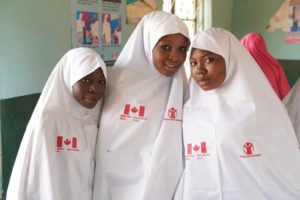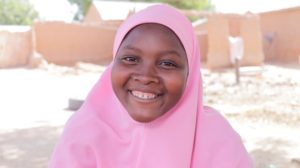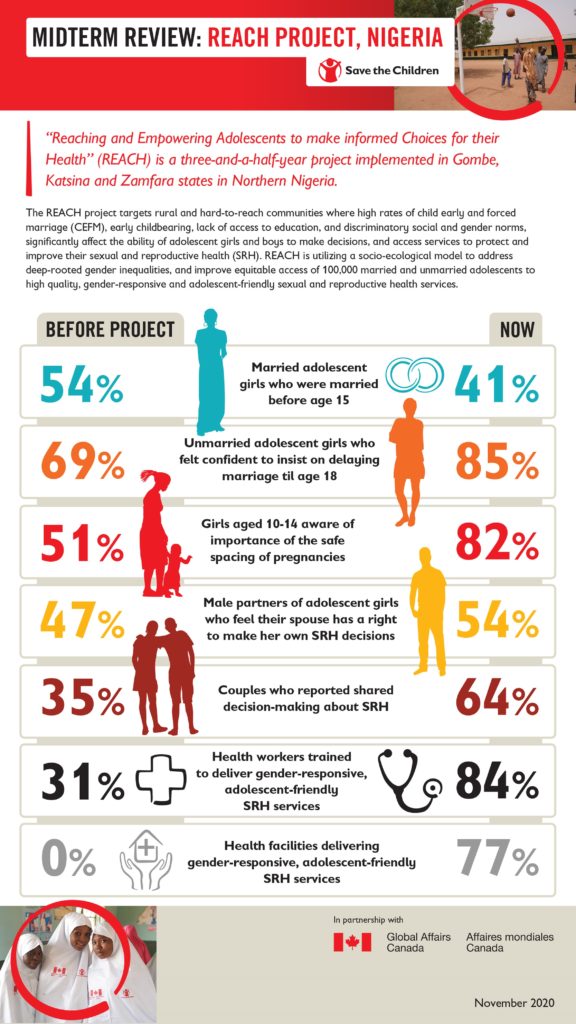REACHing out to improve Sexual and Reproductive Health and rights for adolescents in a challenging context
Nigeria is a country with a remarkably young population – 22% are aged between 10-19 – and these young people face multiple barriers when it comes to their sexual and reproductive health and rights (SRHR). Some of the barriers are structural, such as availability and affordability of health facilities, and some are attitudinal, such as limiting social and gender norms and pervasive stigma around sexuality.
Additionally, although Nigeria’s Child Rights Act (2003) stipulates 18 as the minimum legal age for marriage, this has not yet been universally adopted into state law, and so rates of child and early forced marriage (CEFM) remain extremely high. With CEFM comes early pregnancy and childbearing, forcing many adolescent girls to drop out of school. Complications during childbirth is the leading cause of death among girls aged 15 to 19, and Nigeria has the highest rate of maternal mortality in Africa.

Since 2018, Save the Children has been working with communities in three northern Nigerian states – Gombe, Katsina and Zamfara – to improve adolescent sexual and reproductive health through the Reaching and Empowering Adolescents to make Informed Choices for their Health (REACH) project.
When REACH began, the overall level of SRHR knowledge among adolescents in these regions was low, particularly when it came to the concept of rights. There were low rates of agency and autonomy among girls, and of contraception use, too. Uptake of available services was minimal, and, when they were used, most health facilities had limited capacity to deliver SRHR information and services that were tailored to adolescents’ unique needs.
Now, two years later, has there been any change?
The recently completed midterm review reveals that REACH has generated a multitude of positive changes in Gombe, Katsina and Zamfara. While adolescent marriage remains the norm for girls in each state, there are signs that very early marriage is becoming rarer. At the beginning of the project, 54% of married adolescent girls reported that they had been married before age 15. At midpoint, that figure had fallen to 41%.
The review also shows that young people’s knowledge of specific SRHR issues has improved dramatically. Boys and girls of all ages reported a higher awareness of the risks associated with CEFM and of the importance of spacing pregnancies. Among girls aged 10-14 in particular, the percentage of those who could explain the reasons for safe spacing of pregnancies rose from 51% to 82%. 
There is also evidence to show that levels of autonomy in SRHR decision making among adolescent girls have improved. The percentage of male partners of adolescent girls who reported that their spouse has a right to make her own decisions about her sexual and reproductive health increased from 47% to 54%, and the number of couples who reported making shared decisions about SRHR almost doubled, from 35% to 64%.
Of course, alongside being able to make autonomous decisions about their own health, adolescents also need to have access to the services they need, and accessibility is another area in which REACH has led to remarkable improvements. 81% of health facilities are now open at the weekends, compared with only 30% in 2018. Not only are services more readily available, they are of higher quality now, too, with 84% of health facilities now able to provide gender-responsive, adolescent-friendly SRH services, compared with 31% at the outset. This includes training health workers on how to talk with adolescents in manner that is not judgemental or by using technical jargon.

These improvements in accessibility and quality of services have led to observable increases in the uptake of adolescent sexual and reproductive health services across all three states, especially among married girls. One health administrator in Gombe Esther Musa* told us: “Before [REACH], adolescents don’t come to the facilities. But with the information we have seen them coming to the facilities to obtain services freely and get treated where there is need.”
Overall, the midterm review indicates that the REACH project has generated a great deal of progress over the last two years.
Particularly, it has made significant progress towards removing the systemic barriers adolescents face in accessing SRHR information and services.
However, the review also makes clear that there is much work still to do. While there is encouraging evidence that some attitudinal change has already taken place, the remainder of the project must continue to foster this change, particularly among traditional leaders, parents and health workers. Building on the attitude change that has emerged so far will enable vital transformation of the restrictive social and gender norms that continue to limit adolescents’ access to SRHR information and services.
The results of this review are, in many respects, cause for celebration. But the change has only just begun. It is now time to catch hold of the momentum, build on REACH’s successes and maximise its true potential.
“Reaching and Empowering Adolescents to make informed Choices for their Health” (REACH) is a three -and-a-half-year project implemented in Gombe, Katsina and Zamfara states in Northern Nigeria.
The REACH project targets rural and hard-to-reach communities where high rates of child early and forced marriage (CEFM), early childbearing, lack of access to education, and discriminatory social and gender norms, significantly affect the ability of adolescent girls and boys to make decisions, and access services to protect and improve their sexual and reproductive health and rights (SRHR). REACH is utilizing a socio-ecological model to address deep-rooted gender inequalities and improve equitable access of 100,000 married and unmarried adolescents to high quality, gender-responsive and adolescent-friendly sexual and reproductive health services.
By: Rahinatu Hussaini
*names changed to protect identity


